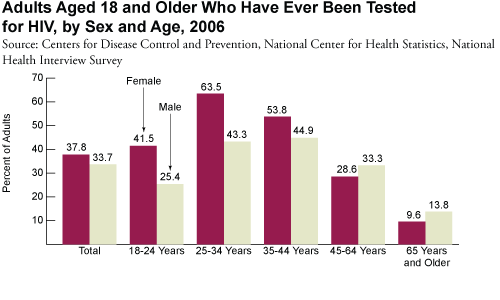HIV Testing
Today, people aware of and receiving appropriate care for their human immunodeficiency virus (HIV) status may be able to live longer and healthier lives because of newly available, effective treatments. Testing for HIV, the virus that causes AIDS, is essential so that infected individuals can seek care and prevent the spread of HIV. HIV testing requires only a simple blood or saliva test, and it is often offered confidentially or anonymously. It is recommended that people who meet any of the following criteria be tested periodically for HIV: those who have injected drugs or steroids, or shared drug use equipment (such as needles); have had unprotected sex with men who have sex with men, anonymous partners, or multiple partners; have exchanged sex for drugs or money; have been diagnosed with hepatitis, tuberculosis, or a sexually transmitted infection; received a blood transfusion between 1978 and 1985; or have had unprotected sex with anyone who meets any of these criteria.1 In addition, the CDC recommends that all pregnant women be tested for HIV during their pregnancy. In 2006, new CDC guidelines were released that recommend all health care providers include HIV testing as part of their patients’ routine health care. Counseling patients on ways to prevent HIV infection or spreading the virus is part of good primary care practice.
In 2006, nearly 36 percent of adults in the United States had ever been tested for HIV. Overall, women were more likely than men to have been tested (37.8 versus 33.7 percent). Women were more likely to have been tested at younger ages, while men were more likely to have been tested at older ages.
Among women, in 2006, non-Hispanic Blacks were most likely to have ever been tested (53.7 percent), followed by Hispanics (46.1 percent), while non-Hispanic White women were least likely (33.5 percent).
1 Centers for Disease Control and Prevention, National HIV Testing Resources. Frequently asked questions about HIV and HIV testing. http://www.hivtest.org, accessed 01/02/08.↑


